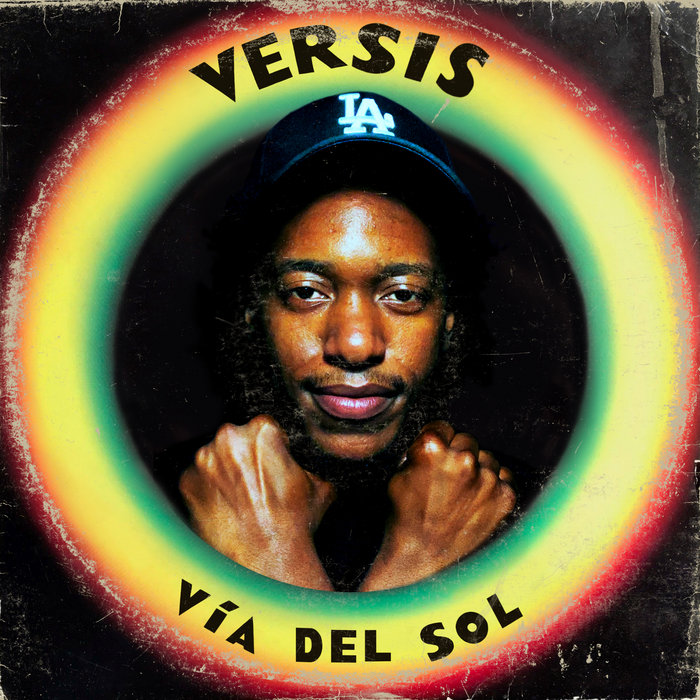
VíA DEL SOL – Versis
this blog is GROOVY – check out great Soul, Funk, Jazz, Hip Hop, Bass, Breaks , Reggae, House n many more TUNES
Rhythm and poetry (often abbreviated as R&P or simply called “rap”) is a vibrant music genre that grooves its way through the fabric of our culture. This musical style mixes rhythmic spoken word with infectious beats, serving as a voice for various communities while keeping heads nodding and feet tapping. Now, let’s take a stroll down this funky lane, exploring how R&P came to be and uncovering some amusing anecdotes about its trailblazing artists.
The roots of rhythm and poetry can be traced back to Africa. From griots who recited epic tales over tribal drum beats to the bluesy sounds emerging from Southern juke joints, African-American oral traditions paved the way for what we now celebrate as rap music.
By the late 1970s, hip-hop was born in NYC’s Bronx when DJs started spinning records at block parties. They looped breakbeats—those jazzy segments that made you want to shake your groove thing—while MCs took turns rhyming over them. The first official rap song? Well, it’s famously debated! But many folks point to “Rapper’s Delight” by The Sugarhill Gang in 1979 as the tune that popped open mainstream doors.
Throughout the ’80s and ’90s, rap blossomed into diverse sub-genres—from gangsta rap with hard-hitting lyrics (think N.W.A.) to party anthems like those pumped out by Will Smith before he slapped Chris Rock!
By the early 2000s, artists like Eminem brought a different spice into the mix with witty wordplay and emotional narratives. And let’s not forget about female rappers shaking things up! Queen Latifah aimed for empowerment while Missy Elliott introduced energetic beats that got everyone dancing—even if they couldn’t quite mimic her iconic moves!
Kool Herc vs. Clive Campbell: Kool Herc—the pioneer DJ known for his cutting skills—was born Clive Campbell! Imagine being famous for your stage name but casually dropping your real one during everyday convo!
Eminem’s Real Name: Most know him as Eminem or Slim Shady—but did you know his actual name is Marshall Bruce Mathers III? It doesn’t have quite the same ring when you put it on a marquee!
Drake’s Degrassi Days: Before becoming one of hip-hop’s biggest names, Drake played Jimmy Brooks—a basketball star who ended up in a wheelchair—in Degrassi: The Next Generation. Talk about going from teen drama to chart-topping hits—it’s proof dreams really do come true!
Nicki Minaj’s Alter Egos: Did you hear Nicki has multiple personas? From Harajuku Barbie to Roman Zolanski—she keeps her fans entertained by switching personalities faster than most people change outfits!
Snoop Dogg Loves Cooking Shows: Snoop isn’t just about those smooth rhymes; he’s got mad culinary skills too! He even hosted “Martha & Snoop’s Potluck Dinner Party” alongside Martha Stewart—a wild combo we never knew we needed until it hit our screens.
Lil Wayne’s Impressive Ink Collection: Lil Wayne boasts more tattoos than most folks have thoughts in a day! He started getting inked at age nine—and no part of his body is left untouched… except maybe his face; that’s still debatable among fans!
As rhythm & poetry evolved musically, its impact socially became undeniable—acting as both escapism and activism wrapped up in catchy hooks.
Artists wield their verses like swords against injustice; think Public Enemy blasting calls-to-action or Kendrick Lamar showcasing personal struggles amidst societal issues in albums like To Pimp A Butterfly. Each verse brings truth to power while getting everybody vibin’ along.
And let us not forget women holding down serious fortitude within this domain! Artists like Lauryn Hill delivered messages around identity while embracing soulful melodies that’ll make anyone swoon—with powerful vocals laced right behind poetic bars.
Fast forward—we’ve seen trap music emerge strong thanks partly due to artists such as Migos pushing boundaries further outwards sonically whilst staying rooted lyrically tough yet accessible enough so kids everywhere could sing along without breaking anything… well unless they try imitating Quavo onstage—that might get dicey!
However you slice it today though – even beyond traditional structures – rhythm & poetry reflects diversity across spectrums culturally speaking which attests profoundly unto audiences enjoying endless choices delving deeper away from mere entertainment…
So there ya have it, fam—the journey through history-flavored funkiness surrounding rhythm and poetry has been nothing short of spectacular! With humor sprinkled throughout each artist unveiled on this journey—the genre continues evolving yet stays alive because every beat carries heartstrings uniting listeners everywhere together… ready after all—to drop those bars where appropriate vibes pop?
Keep groovin’, keep spittin’, keep livin’ life loud — ‘cause rhythm will always pulse through our lives omnipresently making us smile brighter accompanied hand-in-hand tightly wrapped alongside poetic rhythms shared artfully between friends old new alike forevermore… 🌟

VíA DEL SOL – Versis